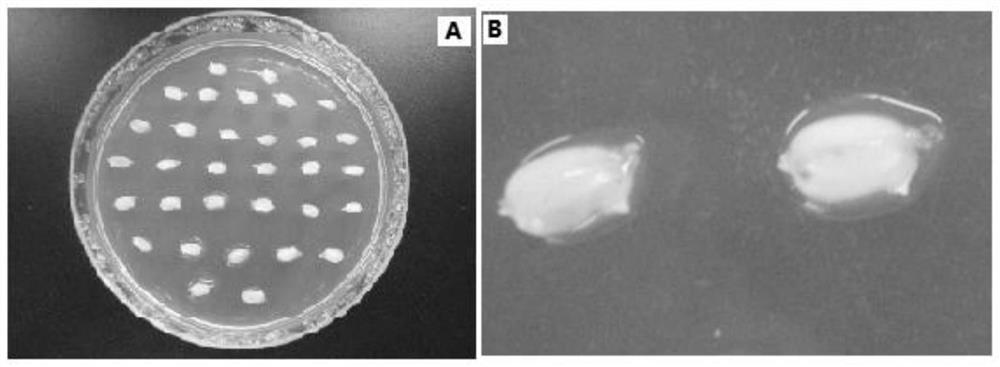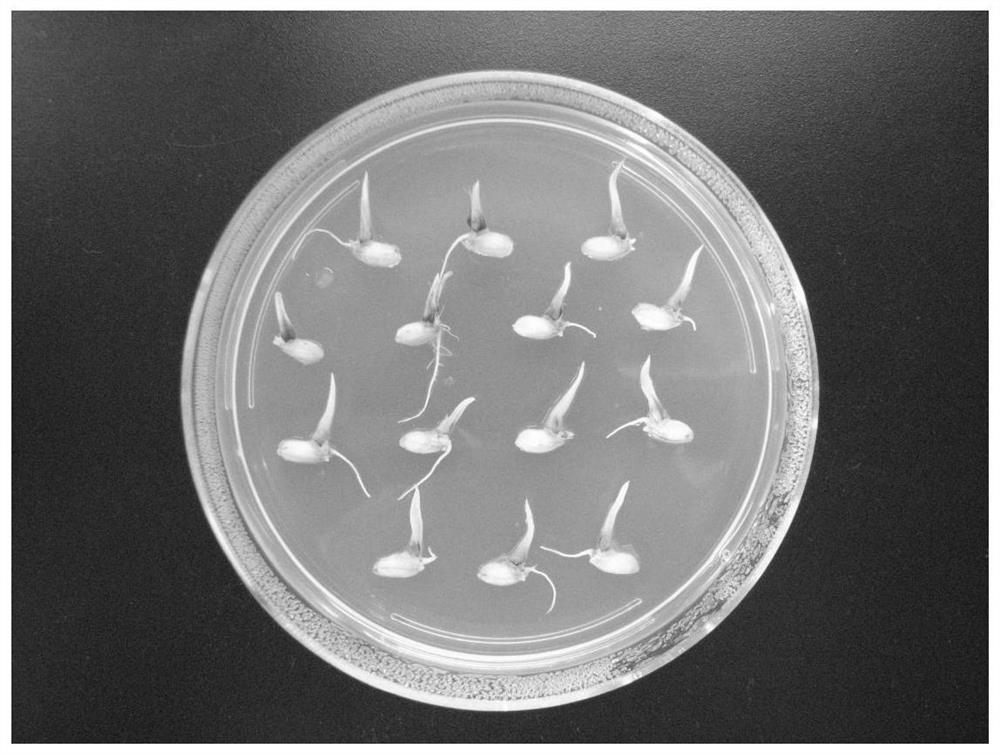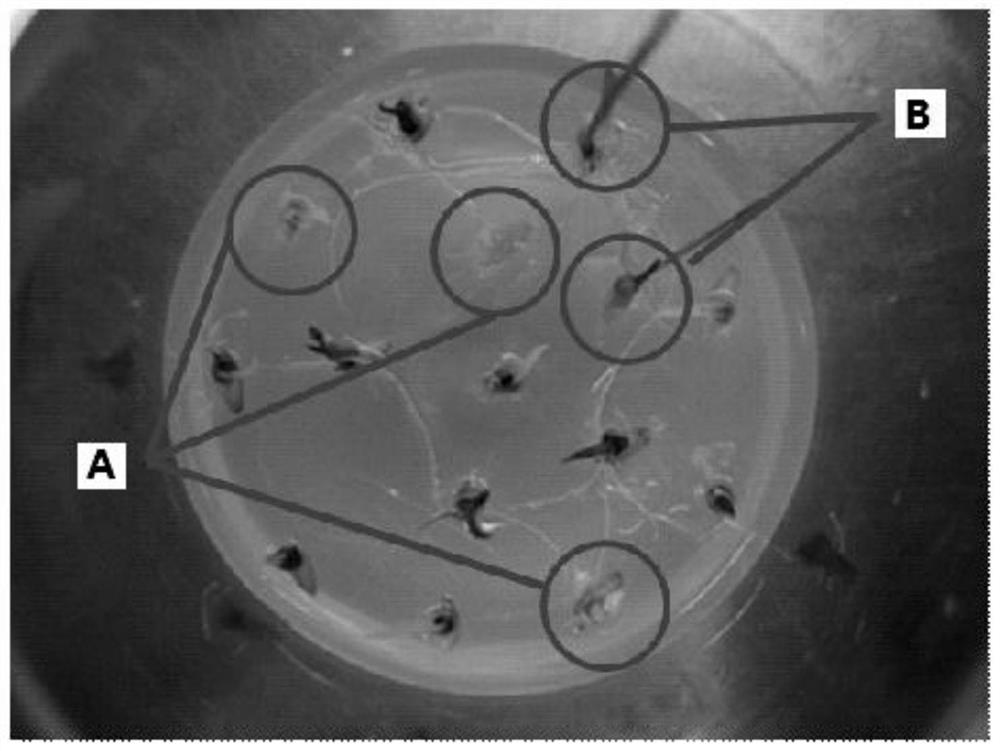A production method of ultrasonic-mediated colchicine doubling japonica rice chromosomes
A technology for colchicine and a production method is applied in the production field of colchicine doubling japonica rice chromosomes, and can solve the problems of high cost, dependence on tissue culture technology, inability to obtain polyploid plants and the like
- Summary
- Abstract
- Description
- Claims
- Application Information
AI Technical Summary
Problems solved by technology
Method used
Image
Examples
Embodiment 1
[0046] Step 1, sterilization and germination treatment of rice seeds:
[0047] Step 1.1, select 200 seeds of rice (japonica rice varieties and strain names are in order, Ji Nongda 878, MY397, L19, D71, Heiying 75, not limited to these varieties and strains), and place them in 100ml in an ultra-clean workbench in a sterile Erlenmeyer flask. First, add 30mL of alcohol with a volume concentration of 75% for rapid rinsing, the time not exceeding 40 seconds, then quickly pour out the alcohol, and immediately rinse with sterile water 3 times to completely remove the alcohol residue. Then, add about 50 mL of 10% H 2 o 2 Soak for 15 minutes, shake the Erlenmeyer flask several times during the period to fully sterilize. Finally, the rice seeds were rinsed repeatedly 3-4 times with sterile water to completely remove residual HO 2 o 2 ;
[0048] Step 1.2, after completing the above process, add 30 mL of sterile aqueous solution with a mass concentration of 0.1% gibberellin to the t...
Embodiment 2
[0062] A method for producing ultrasound-mediated colchicine doubling japonica chromosomes, comprising the following steps:
[0063] Step 1, sterilization and germination treatment of rice seeds;
[0064]Step 1.1, select the rice seeds, place them in a sterile triangular flask in an ultra-clean workbench; first add alcohol with a volume concentration of 75%, the ratio of the amount of alcohol to the amount of rice is 10:100ml / grain, and carry out rapid Rinse, the rinsing time of alcohol does not exceed 40 seconds; then quickly pour out the alcohol, and immediately rinse 3 times with sterile water; then, add 10% H2O to the triangular flask containing rice seeds 2 o 2 Soak for 20min, H 2 o 2 The ratio of the amount of rice to the amount of rice is 20:100ml / grain, during which the triangular flask is shaken several times to fully sterilize; finally, the rice seeds are washed 3-4 times repeatedly with sterile water;
[0065] Step 1.2, add mass concentration in the sterile aque...
Embodiment 3
[0077] A method for producing ultrasound-mediated colchicine doubling japonica chromosomes, comprising the following steps:
[0078] Step 1, sterilization and germination treatment of rice seeds;
[0079] Step 1.1, select rice seeds, place them in a sterile triangular flask in an ultra-clean workbench; first add alcohol with a volume concentration of 75%, the ratio of the amount of alcohol to the amount of rice is 20:100ml / grain, and carry out rapid Rinse, the rinsing time of alcohol does not exceed 40 seconds; then quickly pour out the alcohol, and immediately rinse 3 times with sterile water; then, add 10% H2O to the triangular flask containing rice seeds 2 o 2 Soak for 10min, H 2 o 2 The ratio of the amount of rice to the amount of rice is 30:100ml / grain, during which the triangular flask is shaken several times so as to fully sterilize; finally, the rice seeds are repeatedly washed 3-4 times with sterile water;
[0080] Step 1.2, add mass concentration in the sterile a...
PUM
 Login to View More
Login to View More Abstract
Description
Claims
Application Information
 Login to View More
Login to View More - R&D
- Intellectual Property
- Life Sciences
- Materials
- Tech Scout
- Unparalleled Data Quality
- Higher Quality Content
- 60% Fewer Hallucinations
Browse by: Latest US Patents, China's latest patents, Technical Efficacy Thesaurus, Application Domain, Technology Topic, Popular Technical Reports.
© 2025 PatSnap. All rights reserved.Legal|Privacy policy|Modern Slavery Act Transparency Statement|Sitemap|About US| Contact US: help@patsnap.com



